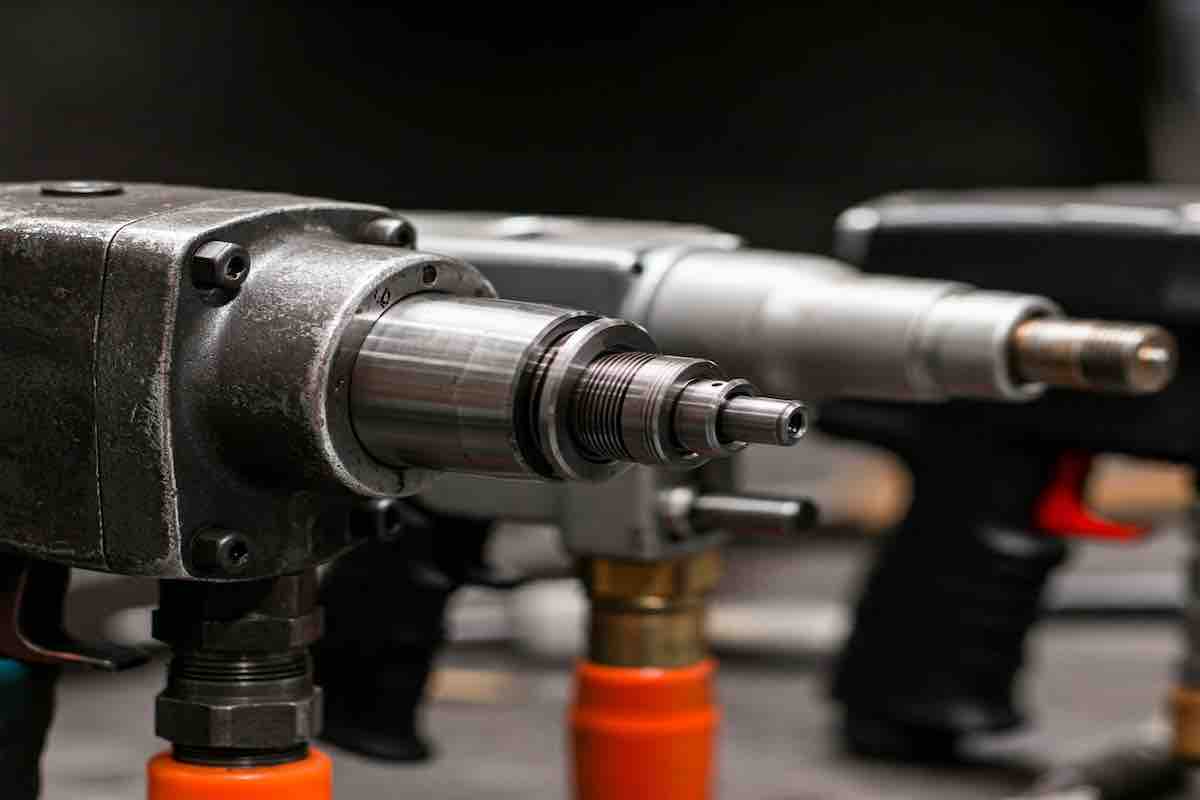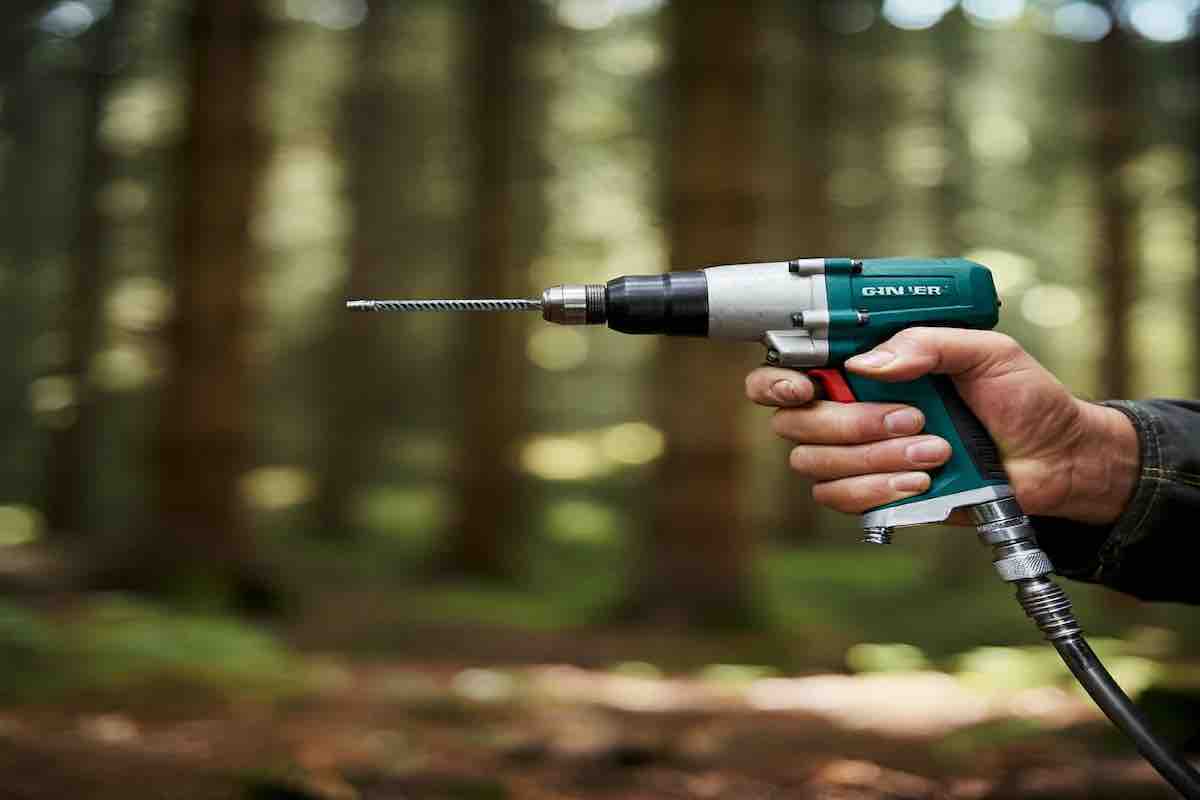The Ultimate Guide to Pneumatic Air Tools: Everything You Need to Know
Pneumatic tools are a popular choice among professionals in various industries due to their ability to deliver robust and precise results. This article will provide a complete guide on what pneumatic tools are, how they work, and the various applications they are used for. This article will detail everything you need to know about pneumatic air tools.
Table of Contents:
- Introduction
- What Are Pneumatic Tools?
- How Do Pneumatic Tools Work?
- Types of Pneumatic Tools
- Air Compressor Guide
- Pneumatic vs Electric Tools
- Choosing the Right Tools
- Maintenance & Care
- Safety Guidelines
- Brand Comparison
- Where to Buy
- FAQs
Introduction

Pneumatic tools have revolutionized industries from automotive repair to manufacturing, offering unmatched power, reliability, and precision. This comprehensive guide will help you understand everything about air tools, from basic principles to advanced applications, ensuring you make informed decisions for your workshop or professional needs.
What Are Pneumatic Tools?
Pneumatic tools are power tools that operate using compressed air instead of electricity or batteries. These tools convert air pressure into mechanical motion, providing consistent power output and reliable performance across various applications.
Key Benefits:
Pneumatic tools offer a compelling array of advantages that make them indispensable in various industries. Their consistent power output ensures reliable performance, while their robust construction and reliance on compressed air often lead to a longer lifespan compared to electric tools. Additionally, pneumatic tools typically require less maintenance, contributing to lower operational costs. The absence of electrical components enhances their safety, particularly in wet or hazardous environments. Furthermore, their impressive power-to-weight ratio makes them highly maneuverable and efficient for demanding tasks. These combined benefits make pneumatic tools a preferred choice for professionals seeking power, durability, and safety in their operations.
- Consistent power output
- Longer lifespan than electric tools
- Lower maintenance requirements
- Safer operation in wet conditions
- More power-to-weight ratio
How Do Pneumatic Tools Work?
Pneumatic tools operate on a straightforward yet powerful principle, harnessing the energy of compressed air to generate mechanical motion. The process begins with an air compressor, which pressurizes air and delivers it through a hose to the tool. This compressed air enters the tool through an inlet valve. Inside the tool, the air pressure acts upon a motor or piston mechanism. This interaction forces the motor to rotate or drives the piston back and forth, converting the potential energy of the compressed air into mechanical energy. This mechanical energy is then utilized to power the specific action of the tool, whether it's the hammering of a nail gun, the rotation of a drill bit, or the sanding action of an orbital sander. As the tool operates, the used air is expelled through exhaust vents, allowing a fresh supply of compressed air to continue the cycle. This continuous compressed air flow ensures consistent power and reliable performance, making pneumatic tools popular for various applications. Pneumatic tools operate through a simple yet effective mechanism:
- Compressed air enters the tool through an inlet valve
- Air pressure drives a motor or piston mechanism
- The mechanical energy powers the tool's action
- Exhaust air is released through vents
Required Components
To effectively operate pneumatic tools, a set of essential components is necessary. First and foremost, an air compressor is needed to generate the compressed air that powers the tools. This compressed air is delivered to the tool through a durable air hose. A pressure regulator is crucial for controlling the air pressure to match the specific tool's requirements, ensuring optimal performance and safety. A moisture separator is often employed to remove moisture from the compressed air, preventing internal tool damage and ensuring smooth operation. Finally, the pneumatic tool chosen for the specific task completes the setup. This interconnected system of components works harmoniously to provide the power and precision that pneumatic tools are renowned for.
- Air compressor
- Air hose

- Pressure regulator
- Moisture separator
- The tool itself
Types of Pneumatic Tools
Standard Pneumatic Tools Comparison Table
| Tool Type | PSI Range | CFM Requirements | Common Applications | Average Price Range |
| Impact Wrench | 90-120 PSI | 4-8 CFM | Automotive, Assembly | $150-$500 |
| Air Drill | 90-100 PSI | 3-6 CFM | Construction, Manufacturing | $100-$300 |
| Sanders | 90-100 PSI | 6-9 CFM | Woodworking, Auto Body | $80-$250 |
| Air Hammer | 90-100 PSI | 2-4 CFM | Demolition, Metalworking | $50-$200 |
| Paint Sprayer | 30-50 PSI | 8-12 CFM | Finishing, Coating | $200-$600 |
Popular Tools at Tend Supplies:
Air Compressor Guide
Sizing Guide for Air Compressors
Selecting a suitable air compressor for your pneumatic tools is crucial for optimal performance and efficiency. Several factors must be considered to ensure your compressor can adequately power your tools. First, identify your tools' CFM (Cubic Feet per Minute) requirements, as this indicates the volume of air needed for operation. Second, consider the duty cycle, which is when the compressor runs versus rests. A larger tank or a higher CFM rating is necessary for continuous use. Tank size is also essential; larger tanks provide a greater reserve of compressed air, reducing the compressor's run time. Finally, portability needs should be evaluated, as more minor, portable compressors are convenient for on-the-go tasks, while larger, stationary units are better suited for workshops. By carefully assessing these factors – tool CFM requirements, duty cycle, tank size, and portability needs – you can confidently choose an air compressor that perfectly matches your pneumatic tool usage.
To determine the right air compressor size, consider:
- Tool CFM requirements
- Duty cycle
- Tank size
- Portability needs
Minimum Requirements Table
| Tool Usage | Recommended Tank Size | Minimum CFM | Suggested PSI |
| Light Duty | 6-8 gallons | 2-3 CFM | 90 PSI |
| Medium Duty | 20-30 gallons | 4-6 CFM | 90-120 PSI |
| Heavy Duty | 60+ gallons | 10+ CFM | 120-150 PSI |
Pneumatic vs Electric Tools
When choosing between pneumatic and electric tools, it's essential to weigh the distinct advantages of each type to determine the best fit for your needs. Pneumatic tools deliver a higher power-to-weight ratio, making them ideal for heavy-duty tasks that demand consistent force. Their robust construction and reliance on compressed air typically translate to a longer lifespan, reducing the need for frequent replacements. Additionally, pneumatic tools often boast lower maintenance costs due to their more straightforward design and fewer wear-prone components. Thanks to the absence of electrical components, their inherent safety in wet or hazardous environments is another significant advantage.
On the other hand, electric tools offer the convenience of portability and immediate startup without needing an external air compressor. They are generally quieter in operation and often have a lower initial cost. However, electric tools may not match the power and longevity of pneumatic tools, especially in demanding industrial applications.
Ultimately, the choice between pneumatic and electric tools hinges on your specific requirements, the nature of your tasks, and your budget. By carefully considering power, durability, safety, portability, and cost, you can select the tool type that best aligns with your needs and ensures optimal performance.
Comparison Analysis
This section delves deeper into the contrasting characteristics of pneumatic and electric tools, offering a comprehensive overview to aid in decision-making. It highlights the advantages of each tool type, emphasizing the superior power-to-weight ratio, extended lifespan, and enhanced performance of pneumatic tools in demanding conditions. Conversely, it acknowledges the portability, convenience, and lower initial cost of electric tools. By presenting a balanced perspective, this analysis empowers users to select the tool type that best aligns with their needs and priorities.
Comparison Analysis: When choosing between pneumatic and electric tools, consider these key differences:
- Power-to-Weight Ratio: Pneumatic tools are generally lighter and more powerful for their size, making them easier to handle for extended periods.
- Durability: Pneumatic tools have a longer lifespan due to their simpler construction and fewer moving parts.
- Maintenance: Pneumatic tools typically require less maintenance, primarily involving keeping them clean and lubricated.
- Safety: Pneumatic tools are inherently safer in wet or hazardous environments as they don't use electricity.
- Cost: Pneumatic tools often have a higher initial investment due to the need for an air compressor.
- Portability: Electric tools are more portable as they don't require an external air source.
- Noise: Pneumatic tools can be louder than electric tools.
Choose pneumatic tools if you need:
- High power and durability for demanding tasks.
- Tools for use in wet or hazardous environments.
- Lower maintenance requirements.
Choose electric tools if you need them:
- Portability and convenience for light-duty tasks.
- Lower initial cost.
- Quieter operation.
Remember, the best choice depends on your specific needs and the nature of your work.
Advantages of Pneumatic Tools:
- Higher power-to-weight ratio
- Longer lifespan
- Better performance in demanding conditions
- Lower maintenance costs
- No risk of electrical hazards
Advantages of Electric Tools:
- No compressor needed
- More portable
- Lower initial cost
- Quieter operation
- Instant startup
Cost Analysis (5-Year Ownership)
| Factor | Pneumatic Tools | Electric Tools |
| Initial Cost | Higher | Lower |
| Operating Cost | Lower | Higher |
| Maintenance | Minimal | Moderate |
| Durability | 10+ years | 3-5 years |
| Replacement Parts | Less frequent | More frequent |
Maintenance & Care
Proper maintenance and care ensure the longevity and optimal performance of your pneumatic tools. Implementing a regular maintenance routine can prevent costly repairs and downtime.
- Daily Maintenance: Simple daily tasks can keep your tools in top shape. These include checking air connections for leaks, draining moisture from the air compressor tank, inspecting hoses for wear and tear, and oiling the tools as needed.
- Weekly Checks: It's essential to clean air filters weekly to prevent dust and debris buildup, check belt tension for optimal performance, inspect the tools for any signs of wear or damage, and test safety mechanisms to ensure they function correctly.
- Monthly Service: A more thorough monthly service is recommended, which may include a complete system inspection, deep cleaning of the tools and compressor, lubrication service, and performance testing to ensure everything is operating at its best.
By following these maintenance guidelines and addressing any issues promptly, you can significantly extend the lifespan of your pneumatic tools and ensure they continue to deliver reliable performance for years to come.
Daily Maintenance:
- Check air connections
- Drain moisture from the compressor
- Inspect hoses
- Oil tools as needed
Weekly Checks:
- Clean air filters
- Check belt tension
- Inspect tool wear
- Test safety mechanisms
Monthly Service:
- Complete system inspection
- Deep cleaning
- Lubrication service
- Performance testing
Safety Guidelines
Essential safety practices:
- Always wear eye protection
- Use hearing protection
- Maintain proper air pressure
- Inspect tools before use
- Keep the work area clean
- Use proper PPE
- Follow manufacturer guidelines
Brand Comparison
Top Pneumatic Tool Brands
- Shinano (Available at Tend Supplies)
- Japanese quality
- Professional grade
- Industry-leading warranty
- Best for precision work
- Renowned for Japanese quality and precision engineering.
- Offers a range of professional-grade pneumatic tools.
- Known for its industry-leading warranty and exceptional customer support.
- Ideal for users seeking high-performance and reliable tools for precision work.
- Chicago Pneumatic
- Durability focused
- Wide range of tools
- Industrial grade
- Focuses on delivering durable and robust pneumatic tools for demanding applications.
- Provides a wide range of tools to cater to diverse industrial needs.
- Known for its industrial-grade quality and performance.
- Ingersoll Rand
- American made
- Heavy duty
- Extensive dealer network
- An established American brand with a reputation for heavy-duty pneumatic tools.
- Offers a comprehensive selection of tools for various industries.
- An extensive dealer network backs it for convenient access and support.
These brands represent some of the leading names in the pneumatic tool industry. Each offers distinct advantages and caters to specific user needs. Whether you prioritize precision, durability, or a wide selection, these brands provide reliable options for professionals and enthusiasts.
Where to Buy
Tend Supplies offers a comprehensive selection of professional-grade pneumatic tools, with advantages including:
- Expert technical support
- Competitive Pricing
- Quality assurance
- Fast shipping
- Professional warranty service
Shop Our Pneumatic Tools Collection
FAQs
Q: What size air compressor do I need for pneumatic tools?
A: A compressor delivering 4-5 CFM at 90 PSI is sufficient for most common air tools. However, tools like sanders and paint sprayers may require 6-12 CFM.
Q: Are pneumatic tools better than electric ones?
A: Pneumatic tools often offer better power-to-weight ratios and durability for heavy-duty applications, though electric tools provide more portability and convenience for light use.
Q: How often should I maintain my pneumatic tools?
A: Daily basic maintenance is recommended, with weekly cleaning and monthly thorough inspections. Regular oiling is crucial for optimal performance.
Q: What's the average lifespan of pneumatic tools?
A: Quality pneumatic tools can last 10+ years with proper maintenance, significantly longer than their electric counterparts.
Q: Do I need special oil for pneumatic tools?
A: Yes, use only air tool oil designed for pneumatic tools. Regular motor oil can damage the tools and void warranties.
Related Articles:
- Maintenance Tips for Air Compressors in Winter
- Air Tool Safety in Hazardous Environments
- DIY Repairs for Common Air Tool Issues
- Best Air Tools for Aircraft Sheet Metal Repair
- Maximizing Workshop Efficiency with Air Tools
- The Different Air Tools used in an Automotive Workshop
- 10 Essential Air Tools Every Mechanic Needs
- The Ten Most Common Pneumatic Tools for Automotive
Visit Tend Supplies for our complete selection of professional-grade pneumatic tools and expert support. Contact our team for personalized recommendations and technical assistance.
Pneumatic tools offer several advantages over traditional tools,
Safety tips for working with air tools










